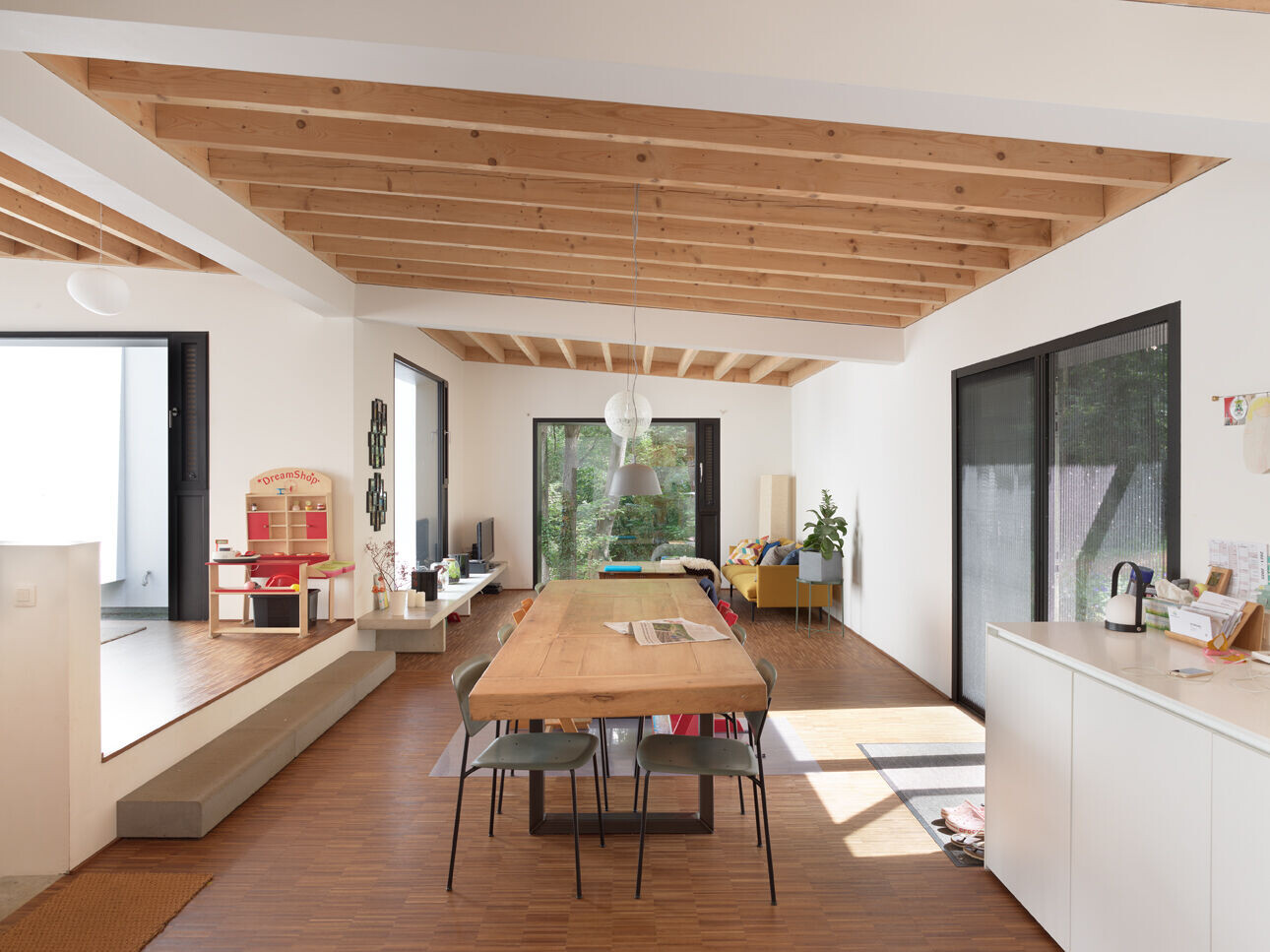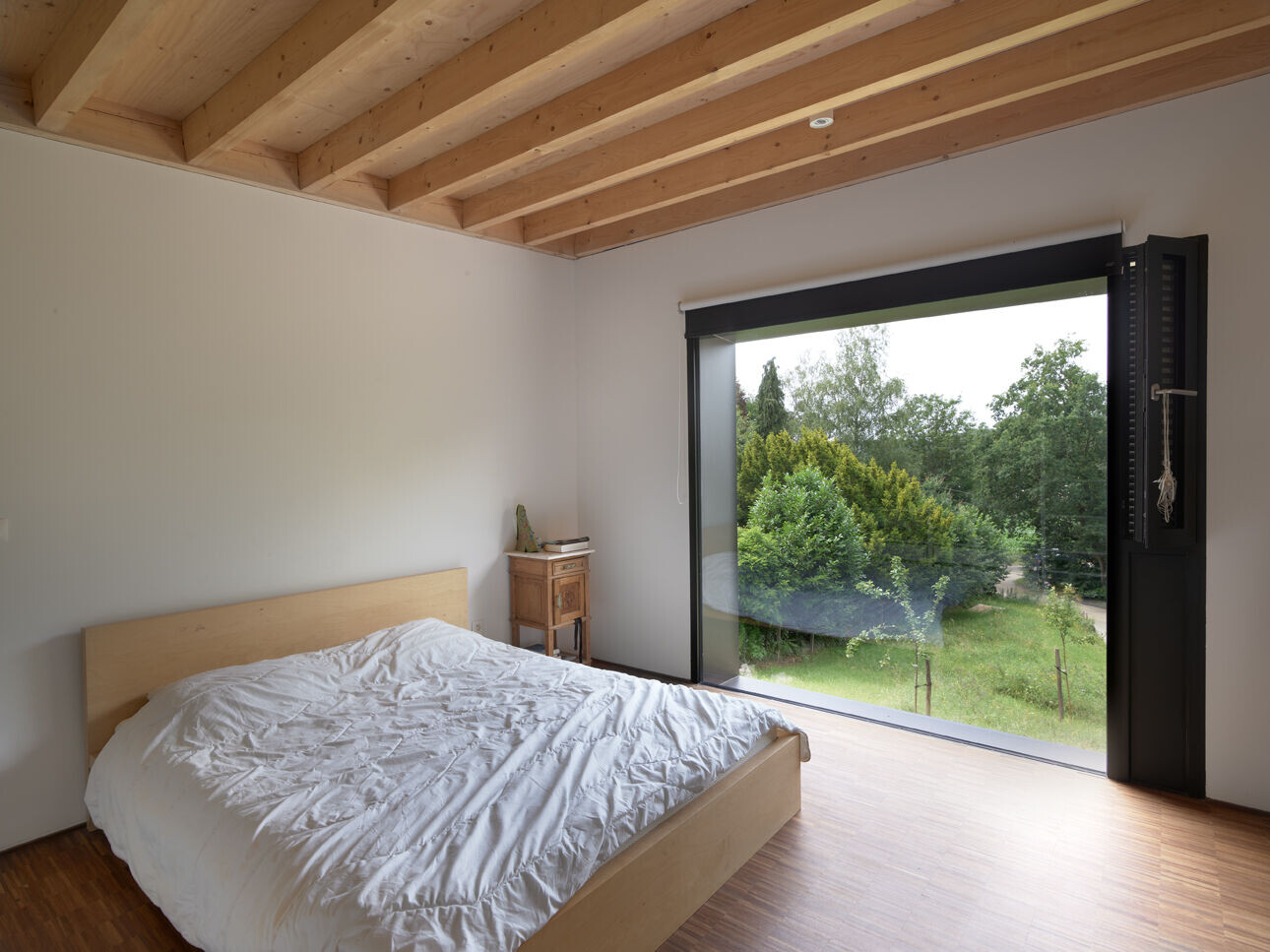Project
The plot is located on one of the most wooded hill ridges in the area. The substrate consists of the typical iron sandstone, which has a very high bearing capacity. The building uses the existing relief as much as possible. It is placed against the hill, sloping in the opposite direction, creating sufficient space between the house and the hill at the front to create a carport. At the back, the house and the hill reach the same level. The slope of the house translates in the interior with floors that change 36 cm in height or 2 steps of stairs. Given the proximity of the forest and the reached height, it feels like you’re living in the treetops. At the front of the house, a stunning view of the valley is created.

Modules
The entire design is based on twelve ‘building blocks’, consisting of a square module of 4,5 m by 4,5 m. This module can either contain a patio or an interior space. If it contains an interior space, it is covered with a slightly sloping roof, made from wooden beams which remain in sight and change direction for every module. Every module has a square opening in the facade, directed at striking views or views through the house, or providing access to the house,….
The structure of the house is a very complicated matter because it cantilevers in different directions, the floor slabs change in height by 36 cm and the forces have to be diverted to a limited basement area. That’s why the entire house is realized in in-situ concrete. The walls of the modules function as floor-high beams. A 3D analysis of the structure showed where the openings in the walls could be made.

Ecology in its context
After consulting the agency ‘NatuurenBos’ it was decided to thin out the forest and give priority to the newer trees. In addition, after the construction, there will be new trees planted around and very close to the house. We deliberately chose ventilation system A. After all, the trees are our natural ‘filter’. The plot is located at the end of a dead-end street, which is why there’s little concern for noise or dust. However, it’s no easy task to build a house with the age-old concept of ventilation chimneys in 2015. The EPB-software indicated that this house would have a huge overheating problem, despite its location with a lot of shaded areas.

Let’s use this house as a plea to look for a good balance between the technical data like compactness, insulation thickness, technical installations, and qualitative data, like spatiality, experience, and urban planning.









































